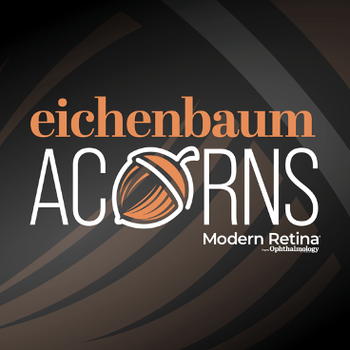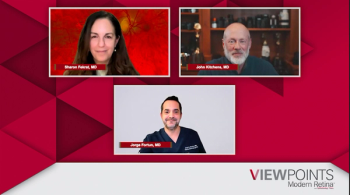
Assessing Benefit-Risk Profile of GA Therapies
Panelists discuss how they present the modest efficacy of geographic atrophy (GA) therapies to patients by framing treatment as maintenance therapy that slows progression rather than providing improvement, using prior imaging to demonstrate disease advancement, acknowledging the inherent risk of developing wet age-related macular degeneration (AMD) while emphasizing that this preexisting risk is increased with complement inhibitor therapy, and offering hope for more effective future treatments.
Episodes in this series

Communicating the modest efficacy of GA therapies requires careful patient education and realistic expectation setting. Unlike anti-VEGF treatments that patients may be familiar with, GA therapies do not improve vision but rather slow the rate of disease progression. Clinicians emphasize that treatment represents maintenance therapy designed to help preserve existing vision for as long as possible rather than providing improvement or cure. Historical imaging from referring doctors or optometrists can be valuable in demonstrating disease progression patterns, helping patients understand their current trajectory and appreciate the benefit of slowing further deterioration. The discussion is framed around hope for the future while acknowledging current limitations.
The psychological component of treatment involves balancing scientific accuracy with patient well-being. Clinicians present these therapies as the first-ever available treatments for GA, which represents a significant breakthrough despite modest efficacy. The conversation includes hope for more effective future treatments while emphasizing the importance of maintaining existing vision. This approach moves beyond hard science into psychological support, recognizing that providing hope is an essential component of comprehensive patient care. Patients who have experienced central scotomas often appreciate the goal of preventing lesion expansion, as they understand the functional impact of progressive vision loss.
A significant concern patients raise involves the potential development of choroidal neovascularization (wet AMD) following treatment initiation. Clinicians address this by explaining that all patients with dry AMD have a baseline risk of developing wet AMD, making this a preexisting concern rather than a new risk. However, complement inhibitor therapy does increase this risk beyond baseline levels. The discussion emphasizes that if wet AMD develops, it will be promptly treated, with wet AMD treatment taking priority if both conditions require management simultaneously. Many patients can receive treatment for both conditions concurrently, and this bridge can be crossed if the situation arises, maintaining the treatment discussion at appropriate intervals.
Newsletter
Keep your retina practice on the forefront—subscribe for expert analysis and emerging trends in retinal disease management.












































